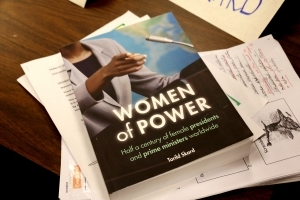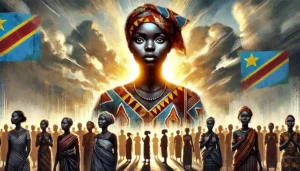In this impact case study, Torild Skard shows how her book Women of Power: Half a Century of Female Presidents and Prime Ministers Worldwide, published by Policy Press in 2015, led to the establishment of the UNSCC course on Leadership, Women and the UN to promote a more gender-balanced workplace within and beyond the UN system and strengthen the voice of women at the leadership table.
When the United Nations was created in 1945, Member States reaffirmed their commitment to the equal rights of women and men. But it took time to place the question of women’s status centrally on the international agenda, adopt a convention against discrimination of women and agree upon goals and actions to achieve gender equality. And despite the commitments and progress in some important respects, masculine dominance and essential inequalities between women and men have persisted to this day.
Many times, Member States have promised to ensure women’s equal access to and full participation in power structures and decision-making. But in 2010, less than 1/5 of the Members of Parliament worldwide were women and less than 1/6 of the cabinet ministers. Totally, not more than 18 women were appointed or elected as presidents or prime ministers in independent states. In the UN system, that was supposed to be in the forefront, only 1 of 4 top leaders was female.
Mapping out women’s political power globally from 1945 to 2010 the prevailing picture is one of very little progress until the 1990s. Then there is a marked change with increasing numbers of women getting to the top. What was happening? After so many years of male ruling how could women suddenly obtain high political positions? What made this possible, and what effect did it have?
Existing information was very limited. I therefore decided to investigate the 73 women in 53 countries worldwide, who managed to become presidents or prime ministers from 1960, when the first got to the top, to 2010. The research resulted in “Women of Power”, published in Norwegian by Scandinavian University Press in 2012 and in English by Policy Press in 2014. In 2015, the US Library Journal awarded the book the Choice “Outstanding Academic Title”, and by 2019 more than 3000 copies of the book were sold.
When my book was launched in English, it was presented on the websites of the International Alliance of Women, IAW, and the Women’s UN Report Network, WUNRN, in addition to Policy Press. It also received good publicity at the large Nordic Women’s Rights Forum arranged in Malmø in 2014. Well attended meetings were further held by the IAW and UN Women in New York in 2015 and 2016, in connection with the UN Commission on the Status of Women, CSW. In Geneva, the UN Library, NGO Forum, IAW and the World Council of Churches organized several talks and debates based on my book during the following years, covered by European radio stations.
In 2014, I was invited to the United Nations System Staff College, UNSSC, in Turin to lecture. UNSSC is the inter-agency learning organization of the UN system with a great number of training programmes every year. I participated among others in a 3-day “UN Leadership Exchange” for Under- and Assistant Secretaries General from different UN units worldwide, women and men, though mostly men. The aim of the Exchange was to develop the vision, courage and skills of the participants by discussing the leadership lessons of renowned speakers in different areas: a business director, a high-ranking police officer, an orchestral conductor, a professor of psychology, a former UN peacekeeper and a UN agency leader. I was requested to present my research on women heads of state and government focusing on the conditions for female top leadership and how the power was exercised.
Including a gender perspective in the Exchange was quite novel. Even the two female speakers reflecting on their own careers made no reference to the fact that they were women, and the programme participants gave the impression that the UN mandate to promote equality for women was not an essential part of their jobs, and that they were to a great extent unaware of what it should entail for their attitudes and leadership practices.
The UNSSC emphasizes the importance for the UN to credibly lead global efforts towards social justice and equality, and as a consequence of the UN leadership exchange in 2014 and demand from UN colleagues, the College decided to include among their flagship programmes in 2015 a new course on “Leadership, Women and the UN”. The aim of the training is to promote a more gender-balanced workplace across and beyond the UN system and strengthen the voice of women at the leadership table. A 5-day course was developed, aimed at mid to senior level female UN staff, to explore leadership approaches, gender and cultural dimensions of leadership, dynamics of power and negotiation and deeper personal-professional coherence and self-awareness to develop skills for transformative and charismatic leadership.
Since 2015, the course has been organized several times every year. I have contributed not only by presenting my research on women of power. I have also provided historical overviews of the UN and women’s leadership, analyzing why progress globally is so slow, reflecting on my own leadership journey in Norway and the UN and finally discussing how we can achieve gender equality in political decision-making nationally and internationally? From 2015 to 2019 I have lectured at 8 courses in Turin, 7 in Geneva, 3 in Vienna, 2 in Cairo and 1 in Nairobi.
In the past years there has been considerable progress in the UN system on the awareness of the role of the organization in promoting gender equality. And in 2018, the impact of the Leadership, Women and the UN programme was studied. Over 350 women professionals from 55 UN entities participated in the courses, and in-depth interviews with alumnae gave a 100 % recommendation rate. The last course was in November 2019, and they will continue in 2020.


